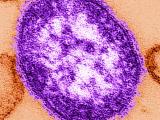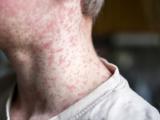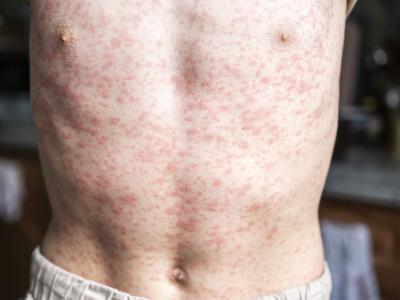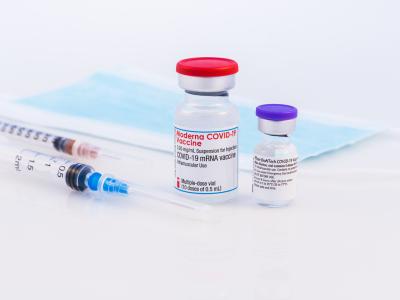Apr 29, 2011
Researchers track 2009 H1N1 virus changes
A US Department of Defense (DoD) notice said an emerging 2009 H1N1 flu group from recent outbreaks in Venezuela and Mexico's Chihuahua state bears watching because it has been linked to severe infections and deaths, including some patients who were previously vaccinated. The DoD analyzed recent samples from the area and included the findings in the US Air Force School of Aerospace Medicine's Apr 26 respiratory illness surveillance report. Researchers said they compared the primary Mexican strain with 2009 H1N1 viruses from other regions that are in other flu virus genetic databases. They reported that the Mexican group emerged very late and shows signs that it came from a single 2009 H1N1 strain and appeared briefly in 2010. Testing suggests it is not categorized with the H1N1 subclade that is still dominant in Europe or the Christchurch or Hong Kong subclades that are circulating. The DoD said the Southern Hemisphere's flu season may provide more clues about the emerging Mexican group.
In other developments, virologists in Thailand say oseltamivir (Tamiflu) resistance in 2009 H1N1 samples is increasing, according to a report today from the Bangkok Post. Yong Puworawan, from Chulalongkorn University's clinical virology center, told the Post that monitoring found no signs of resistance during the first wave but that levels were 0.2% and 0.8% during the next two waves of illnesses. However, he said antiviral medications are still effective for treating 2009 H1N1 infections.
Apr 29 Bangkok Post story
US flu activity continues to fade
Flu activity across the nation continued to recede across the nation, though the percentage of doctor visits for flu-like illness in the US Center for Disease Control and Prevention's (CDC's) northeast region rose above the area's baseline. Four states are still reporting regional geographic spread of the flu, all of them in Maine, New Hampshire, New York, and Connecticut. However, most flu indicators dropped, including the percentage of positive respiratory samples, which fell to 4.3% from 6.8% the previous week. The percentage of deaths from pneumonia and flu was 8%, putting it above the epidemic threshold for the 13th week in a row, the CDC said. Two pediatric deaths were reported, both from influenza B, raising the season's total to 97. The profile of circulating flu strains didn't change much last week, but the percentage of 2009 H1N1 isolates dropped a bit while the number of influenza B samples rose slightly.
Apr 29 CDC flu surveillance update
Impact of pH1N1 vax on seasonal flu vaccination in healthcare workers
Effective risk communication for influenza vaccination should focus on educating the public and healthcare workers (HCWs) about vaccine safety and the benefits of vaccination, conclude a group of German researchers. The researchers made available an anonymous questionnaire to Frankfurt University Hospital HCWs and medical students who were receiving seasonal flu shots for the 2010-11 season to learn more about attitudes toward flu vaccination and how the 2009 H1N1 pandemic had influenced those attitudes. Of the total 1,645 HCWs and medical students who responded to the questionnaire, 933 (56.7%) reported that they had received the AS03-adjuvanted pandemic vaccine last flu season. Of those who did not receive it, the main reasons for their refusal were objection to the AS03 adjuvant (33.6%) and the belief that they were unlikely to catch the flu (33.4%). Of the surveyed group, 270 (16.4%) said the H1N1 pandemic had influenced their attitude toward vaccination in general. According to the authors, "It is . . . not enough to provide a safe vaccine, one also needs to convince the public to accept it."
Apr 28 Eurosurveillance article
Measures minimize measles burden on hospitals
Measles outbreaks in healthcare facilities can be costly, but specific measures can help minimize the financial and medical impact of the disease, according to a new report on the nation's largest healthcare-related measles outbreak, which occurred in Tucson in 2008. The report by CDC researchers appears today in an early online edition of the Journal of Infectious Diseases. Hospital officials at 2 of the 7 affected hospitals spent $800,000 to contain the outbreak. Costs included serologic testing to determine which staff were immune to the disease and furloughs for staff exposed or vulnerable to the disease. Tucson's outbreak included 363 suspected, 8 probable, and 14 confirmed measles cases. Seven of the confirmed cases were linked to healthcare settings. The authors suggested that to contain the high costs, hospitals and clinics should ensure that staff immunization records are readily accessible, consider measles as a diagnosis in patients with fever, rash, and a recent history of international travel or links to a person with a rash illness, and place patients with suspected measles immediately in airborne isolation units. In an accompanying editorial, Stephen M. Ostroff, MD, with the Pennsylvania Department of Health, wrote that 9% of personnel at two Tucson facilities lacked immunity to the disease and that the same situation likely exists at other hospitals across the nation. He said the disease and its financial burden will likely pose a threat in the years ahead because of international travel and rising numbers of people declining routine immunizations.
Apr 29 EurekAlert press release
Apr 29 J Infect Dis abstract
Apr 29 J Infect Dis editorial extract
FDA moves on Wisconsin seafood company
A Sun Prairie, Wis., food company had its breaded seafood products seized yesterday by order of the Food and Drug Administration (FDA). The company, K&S Wholesale Meats, was on the FDA's radar because of earlier noncompliance with requirements that they have a Hazard Analysis and Critical Control Point) plan in place in accordance with the Federal Food, Drug, and Cosmetic Act. FDA sent a warning letter to the company Jan 13, 2010, and the company said it would correct the situation. However, two subsequent inspections showed that breaded fish continued to be repackaged by the company without a written hazard-reduction plan. The seafoods are sold by Soderholm Wholesale Foods in the same Wisconsin town under the "Seaside" label.
Apr 28 FDA press release


















